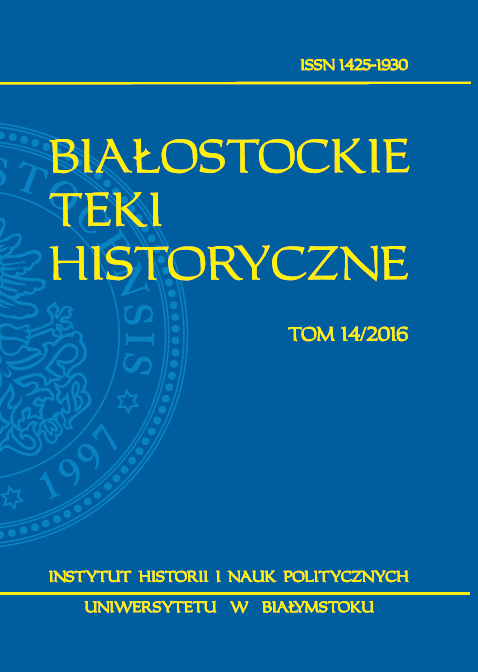Orthodox Church in the Polish-Lithuanian Commonwealth in the 16th–18th Century
Orthodox Church in the Polish-Lithuanian Commonwealth in the 16th–18th Century
Author(s): Antoni MironowiczSubject(s): Christian Theology and Religion, History, History of Church(es), Modern Age, Theology and Religion, Eastern Orthodoxy
Published by: Wydawnictwo Uniwersytetu w Białymstoku
Keywords: Orthodox Church; Polish-Lithuanian Commonwealth; multicultural society; religion relations; tolerance
Summary/Abstract: The society of the Commonwealth was always characterized – to a greater or lesser degree – by a diversified religious and national structure. The problem with a society with different religious characteristics had appeared on a large scale already in the 14th century, when ethnically non-Polish people could be found within the borders of the Commonwealth. In the 14th century the Kingdom of Poland lost extensive ethnically Polish areas in the West. The religious and ethnic structure of the state changed due to the incorporation of Red Ruthenia by Casimir III the Great (Kazimierz Wielki). Casimir III the Great – the last representative of the Piast dynasty – understood the importance of the problem connected with the presence of Orthodox Church members within state borders. The king preserved the rights and rites of the Orthodox Church. Political relations between the grand Duchy of Lithuania and Catholic Poland had religious repercussions. It curbed the development of the Orthodox religion and paved the way for the Latin Church – with all the political and cultural consequences. The Orthodox religion changed from the dominating position to a tolerated one. Yet the Jagiellonians understood that Orthodox people inhabited their own – in an ethnic sense – territories. The Jagiellonians, as opposed to the Angevin (Andegawenowie) or the House of Valois (Walezjusze), built their power on the multireligious structure of the Grand Duchy of Lithuania. They did not intend to follow the western model of a single religion Roman Catholic state, with one dominating Latin culture. Their stand resulted from the ethnic structure of the Grand Duchy of Lithuania. During the Jagiellonian dynasty, the Orthodox religion became a national and folk denomination, through the omnipresence of various forms of cult and rites. The power of the Commonwealth was based on its recognition by the Orthodox Ruthenian population of the Crown and the Grand Duchy of Lithuania as their own state. Good multireligious and multicultural cohabitation was shaken by the 1596 Union of Brest (Unia Brzeska). The Union of Brest undermined the main element of Ruthenian culture, based on its spiritual unity with Byzantium. A medial element, situated between the two traditions, was added to the existing Catholic-Orthodox model. The Union’s initiators were mistaken in their beliefs that its attractiveness would move Ruthenians from the Orthodox Church. Despite this tendency, the fall of Orthodox culture did not take place; on the contrary, it developed in new forms, which were more adequate to 17th century’s reality. Consequently, the Union of Brest did not turn against the Orthodox Church assuch, but the Orthodox Church in the Commonwealth. The Union of Brest was in some aspects beneficial for the Roman Catholic Church, yet it did not solve any of the internal problems of the state. In Poland the distance between Polish elites and Ruthenian culture increased. A Protestant, brought up in western culture, was closer to a Catholic than a Ruthenian following Byzantine traditions, though increasingly more and more immersed in Polish culture.
Journal: Białostockie Teki Historyczne
- Issue Year: 2016
- Issue No: 14
- Page Range: 41-61
- Page Count: 21
- Language: English

